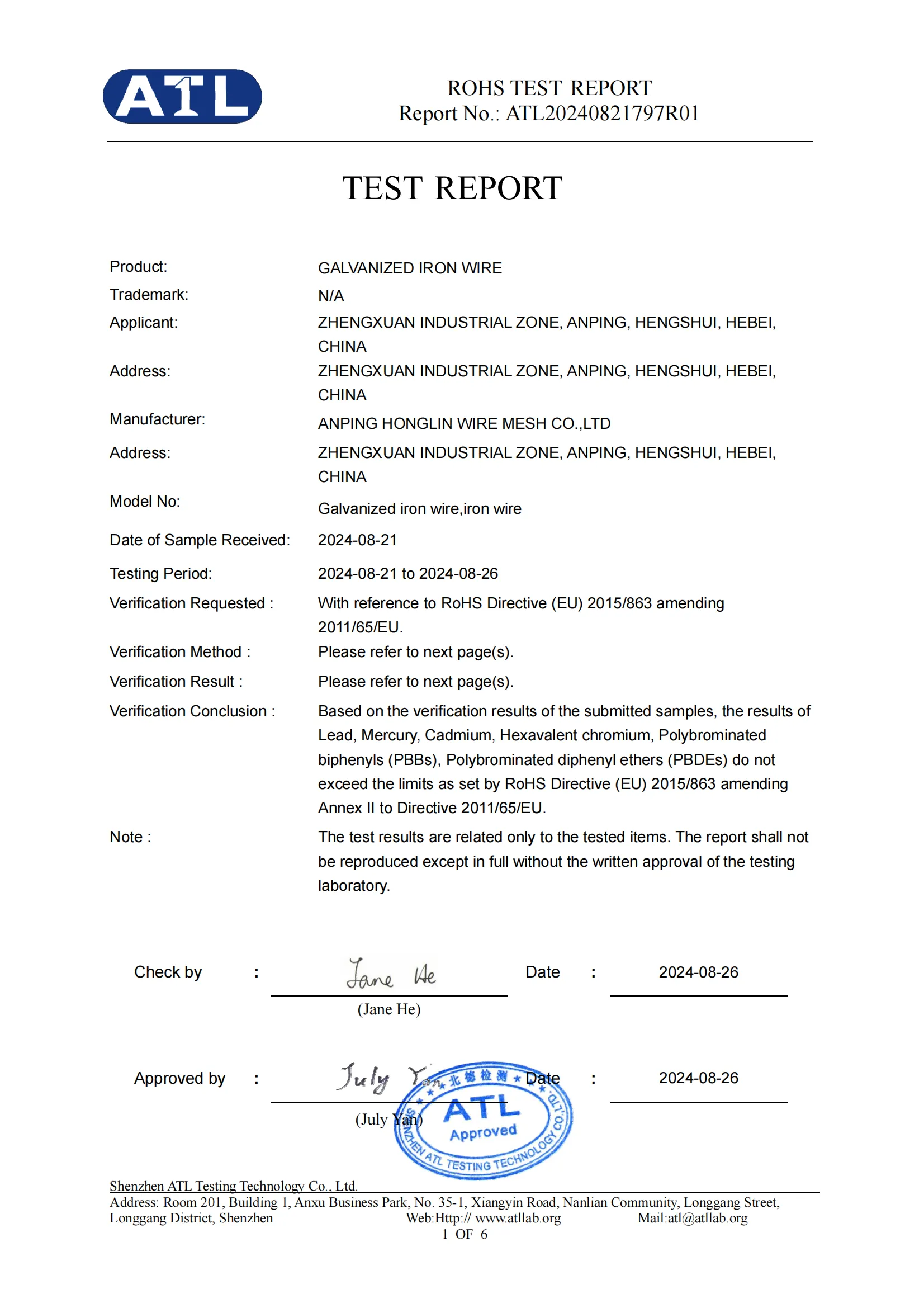Understanding the Benefits of 21 Gauge Galvanized Wire for Various Applications
Understanding 21% Gauge Galvanized Wire Properties, Uses, and Benefits
When it comes to versatile and durable materials in the construction, crafting, and industrial sectors, galvanized wire is a commonly chosen option. Among the various gauges available, 21% gauge galvanized wire stands out due to its unique properties and practical applications. This article explores what 21% gauge galvanized wire is, its benefits, and its common uses.
What is Galvanized Wire?
Galvanized wire is steel wire that has been coated with a layer of zinc to protect it from corrosion. This galvanization process involves immersing the wire in molten zinc, creating a barrier that shields the metal from moisture and other corrosive elements. The result is a product that is not only strong but also resistant to rust and degradation, making it suitable for both indoor and outdoor applications.
The Significance of Gauge
The term gauge refers to the wire's diameter; a higher gauge indicates a thinner wire, while a lower gauge indicates a thicker wire. The 21% gauge wire falls between the commonly used 20 and 22 gauge wires, presenting characteristics that can suit a variety of projects. Specifically, 21% gauge wire typically has a diameter of approximately 0.032 inches (or around 0.81 mm). This size offers a balance between strength and flexibility, making it an excellent choice for various applications.
Key Properties of 21% Gauge Galvanized Wire
One of the most significant advantages of 21% gauge galvanized wire is its strength. Despite being relatively thin compared to lower gauges, it possesses a high tensile strength, allowing it to handle considerable weight without breaking. Furthermore, the zinc coating not only prevents rust but also enhances the wire's overall lifespan, making it economically advantageous.
Another property of this kind of wire is its flexibility. The 21% gauge thickness allows for easy manipulation, which is ideal for projects requiring intricate bending or twisting. This characteristic makes it particularly appealing for artistic applications, such as jewelry making or crafting decorative items.
21 gauge galvanized wire

Common Uses
21% gauge galvanized wire boasts a wide array of applications across different fields
. Here are some common uses1. Fencing One of the most popular uses of galvanized wire is in fencing. The strength and weather resistance of 21% gauge wire make it a practical choice for creating sturdy fences for livestock or gardens.
2. Crafting and DIY Projects Many artisans and crafters utilize this gauge wire in various projects. Its flexibility allows for the creation of intricate designs in jewelry, sculptures, and home decorations.
3. Binding and Support The wire can be used in construction and gardening to bind materials together. It is often employed to secure plants as they grow or to support structures like trellises.
4. Electrical Applications Due to its conductivity, galvanized wire is sometimes utilized in electrical fencing and grounding applications, ensuring safety and durability.
5. Automotive and Marine Applications The corrosion resistance of galvanized wire makes it suitable for use in automotive and marine environments where moisture and rust are common concerns.
Conclusion
In summary, 21% gauge galvanized wire is a versatile and durable material that meets various demands across multiple industries. Its combination of strength, flexibility, and corrosion resistance makes it a preferred choice for professional and DIY projects alike. Whether you are a gardener in need of support structures, an artisan crafting delicate pieces, or a contractor working on larger projects, this gauge of galvanized wire can provide the reliability and durability required to get the job done effectively. As you explore your next project, consider the benefits of incorporating 21% gauge galvanized wire to enhance your outcomes and ensure longevity.
-
Space-Saving Chain Fence Hacks Vertical Gardening with Cyclone MeshNewsJul.16,2025
-
Innovations in Iron Nail Wire Production for Modern ConstructionNewsJul.16,2025
-
Creative Uses of Wire Netting Fence in Modern Landscape DesignNewsJul.16,2025
-
Barbed Wire Fence Innovations in Anti-Climb TechnologyNewsJul.16,2025
-
Architectural Uses of Umbrella Nails for Aesthetic Roof DesignsNewsJul.16,2025
-
Architectural Uses of Razor Barbed Wire in Secure Urban DesignNewsJul.16,2025




